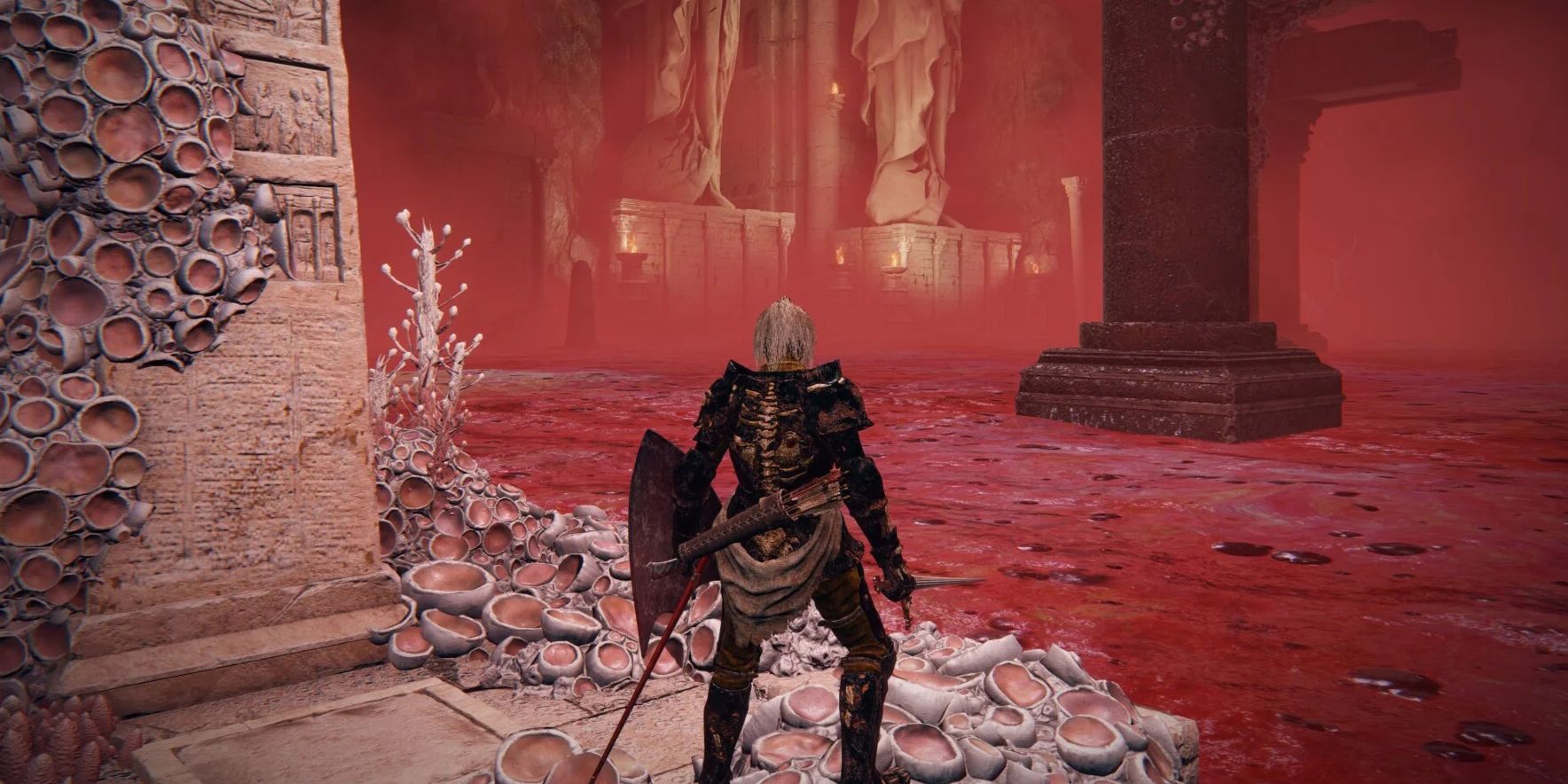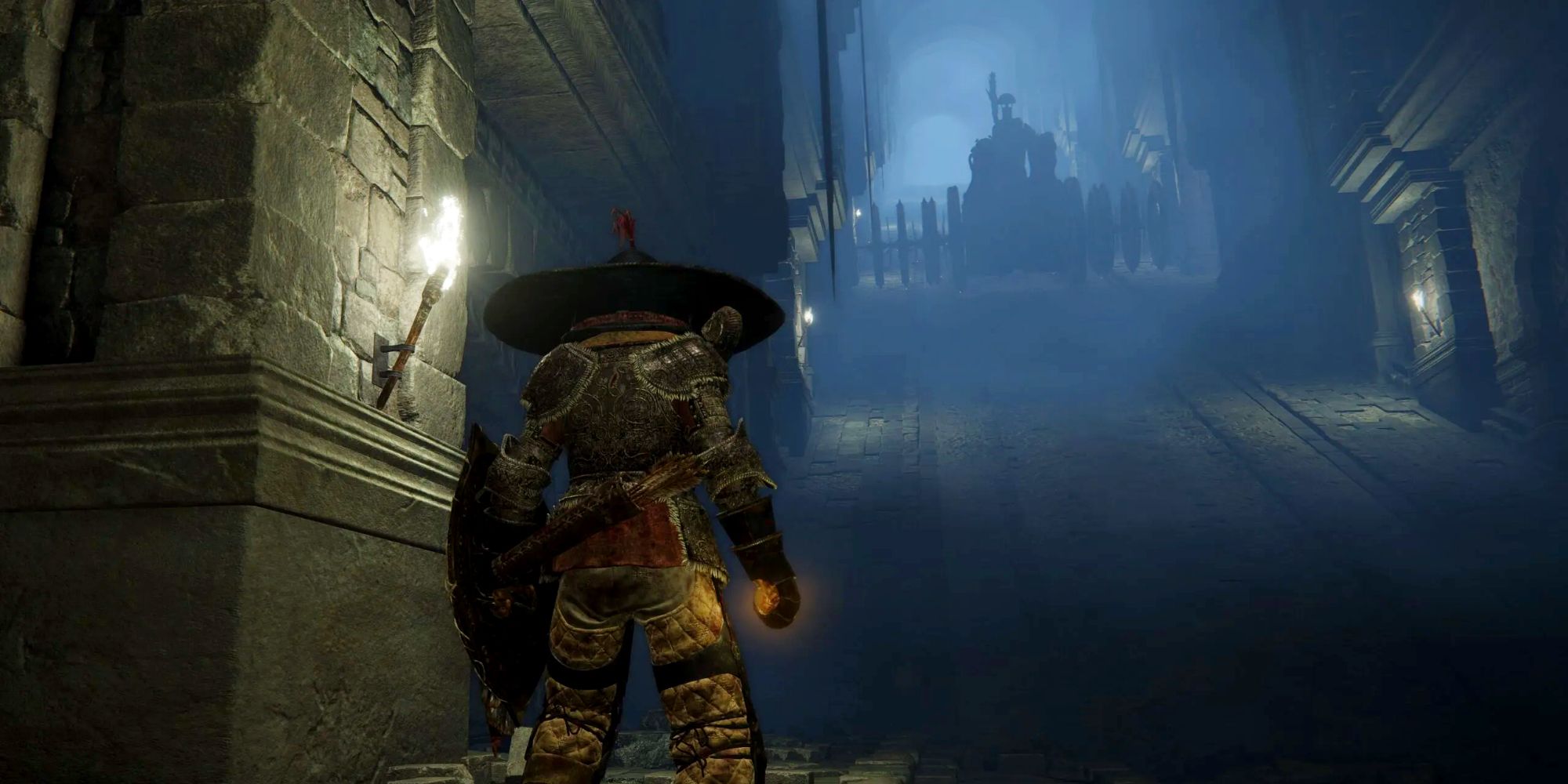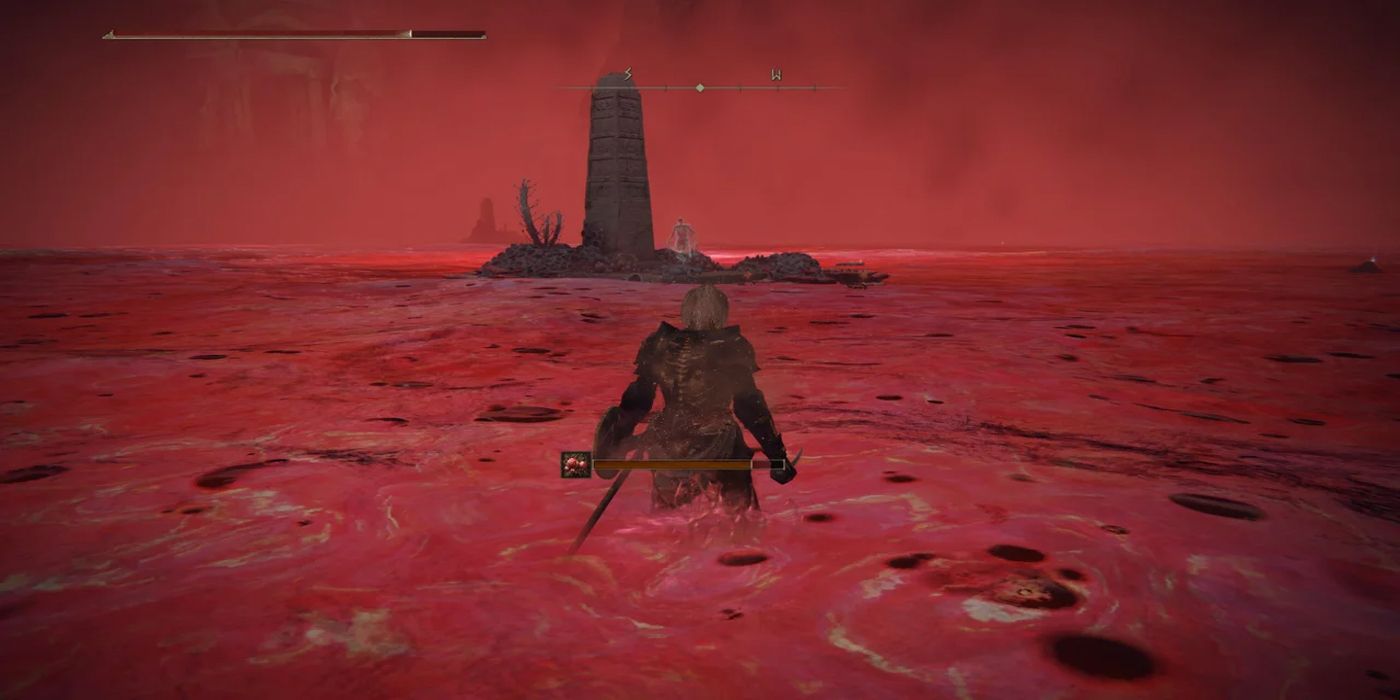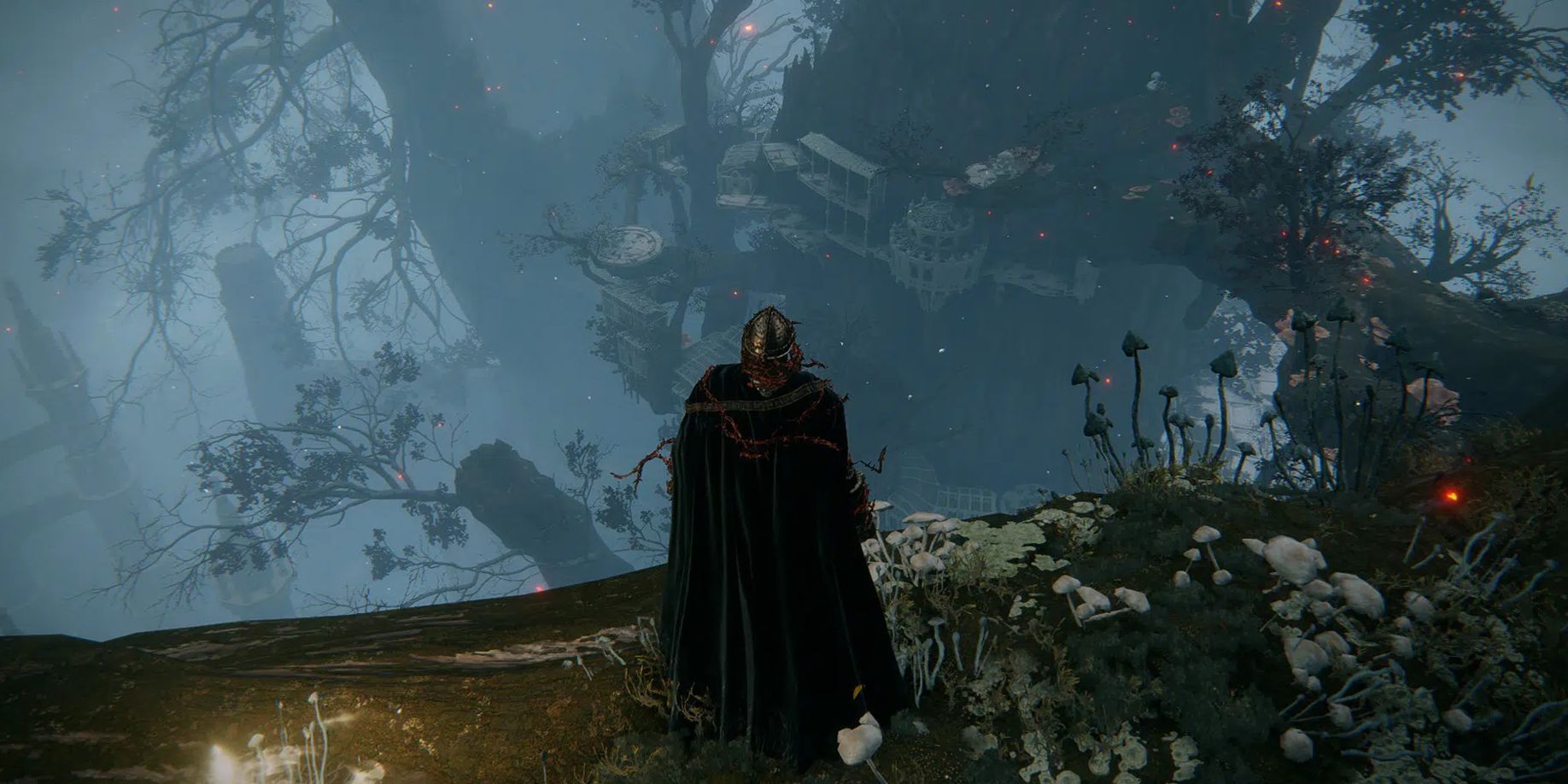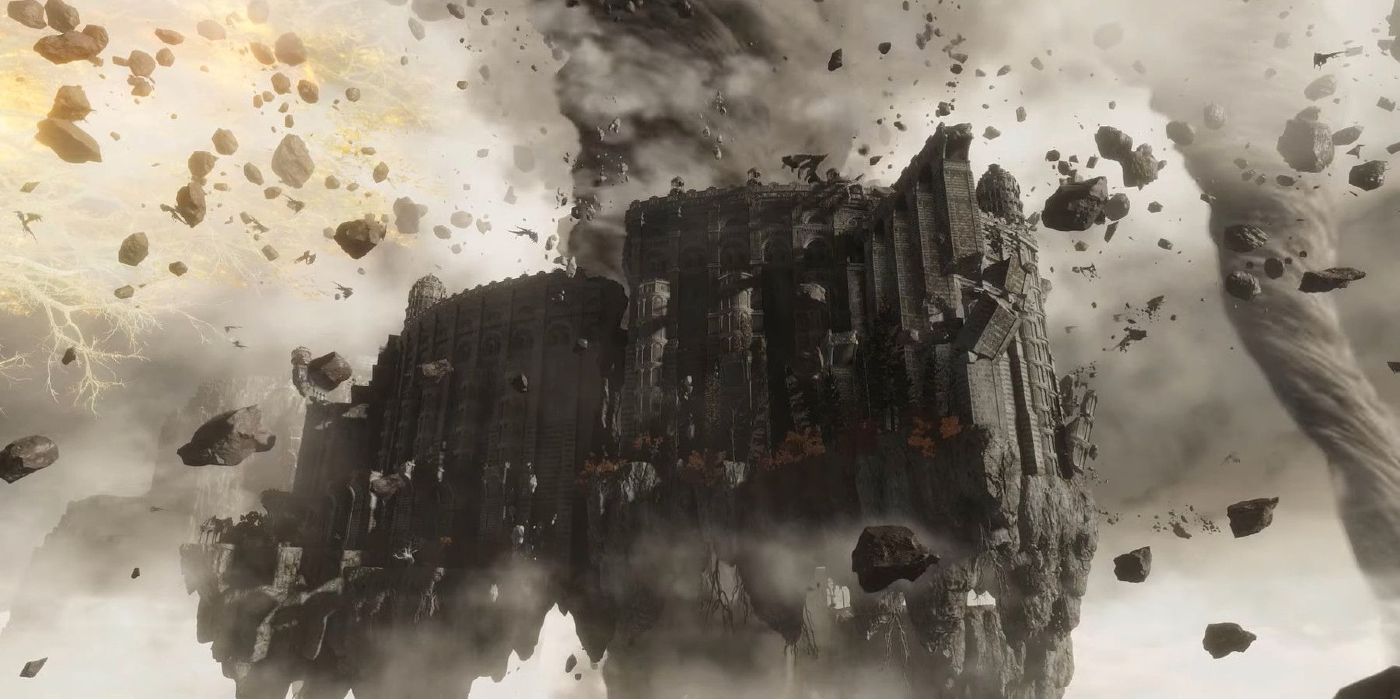Elden Ring's dungeons are challenging, but some of them let the player know far earlier than others. Between crushing defeats at the hands of powerful bosses, treacherous environments where the slightest misstep could be the player's last, and unwelcome surprises like PvP invasions or transforming enemies, Elden Ring's Lands Between are an incredibly hostile place to be. Still, the player can take pride in overcoming Elden Ring's trials, in anticipating its threats and meeting them with ample preparation and skill.
[Warning: This article contains spoilers for Elden Ring.]
While some dungeons hide their demoralizing boss fights behind stretches of twisting corridors and obscuring walls of fog, others make it clear from the start that the player's in for a world of hurt. These early warning signs, like some of Elden Ring’s most annoying enemies outside a cave entrance or unusual environmental effects, can signal to low level players that they ought to keep out. More masochistic players, of course, will rush in eager to face a worthy obstacle. They may not always be the hardest dungeons in the game, but these Elden Ring locations will have players muttering curses under their breath from the moment they walk in.
The Fringefolk Hero's Grave Greets Elden Ring's Tarnished With A Poisonous Pool
Most players will first encounter the Fringefolk Hero's Grave early on in their Elden Ring journeys - it's directly adjacent to the game's tutorial area, the Stranded Graveyard. However, it's secluded behind a fog wall that can only be opened with two of Elden Ring’s Stonesword Keys, which players won't find until a bit later. Likely expecting some secret treasure, players will readily offer up the keys, only to find nothing but a short drop into a room full of poison. They'll have to rush through the toxic puddle at top speeds in order to avoid contracting a health-diminishing status effect, but what awaits them around the first corner is even worse.
The Fringefolk Hero's Grave hosts a colossal Chariot, a mechanized enemy that can't be killed by traditional means. Elden Ring's Chariots have the appearance of giants riding horse-drawn wagons, and can crush the player by rolling over them or impale them on spikes protruding from their wheels. Players will have to rush between safe nooks in the walls to progress. Additional enemies lurk in these nooks, and the player must engage them while looking out for Elden Ring’s first Hero's Grave Chariot. After being run over countless times, the player will face an Ulcerated Tree Spirit, a giant, serpentine foe who crowds the arena. This dungeon is difficult from the beginning, but rewards completion with a rare Golden Seed.
Elden Ring's Lake of Rot Presents A Familiar Obstacle With A Deadly Twist
Anyone who's played a FromSoftware's Soulsborne game knows the trials and tribulations presented by the quintessential poison swamp area. These areas always require the player to navigate a large, open area where the floors are covered with status effect-inflicting muck. Demon's Souls has one, Bloodborne has one, every Dark Souls game has one, and they're all unrelentingly frustrating. Not to be outdone, Elden Ring has multiple infamous poison swamps, and one of them - the Lake of Rot - ramps the difficulty up further. The Lake of Rot's red waters will already be a familiar sight to those who have survived Caelid's swamps, but they'll still give Soulsborne veterans flashbacks to the most frustrating parts of earlier FromSoftware games.
However, the Lake of Rot doesn't inflict the Poison status effect, but Scarlet Rot instead. Scarlet Rot is much faster acting than Poison, so players who contract it will have to mitigate the effects immediately. Players will have to brave the deadly lake piecemeal, stopping at raised platforms in the water to heal and let the Rot buildup wear off. The Tarnished will have to explore multiple Rot-infested paths, defeating multiple bosses including Elden Ring’s otherworldly Astel, Naturalborn of the Void. However, the rewards for completing Elden Ring's Lake of Rot are great, including a cookbook that allows the player to craft Rot-inflicting consumables.
Elden Ring's Haligtree Tries To Throw Off The Tarnished's Balance
Miquella's Haligtree brings new meaning to the concept of "branching dungeon paths." The player can only access this area late in Elden Ring's story, since it requires completion of a complicated puzzle in a high level, late game area featuring invisible assassins to even access. By the time the player gets there, they'll likely be familiar with the art of navigating narrow passages with certain death on either side - many Elden Ring dungeons require this skill. But the true challenge begins at Elden Ring's Haligtree, where the player will be met with a harrowing sight: the dungeon is made up of crisscrossing tree branches extending in every direction, the largest among them barely wider than the Tarnished's stance.
To make matters worse, the Haligtree's branches are populated with enemies called Oracle Envoys. They're kind of cute from a distance, somewhat resembling snowmen carrying brass instruments. However, the ranged attacks they emit when they blow their horns prove quite a threat, often knocking the player from their perch. Players will also have to be careful when dodging melee attacks, as it's all too easy to roll off the edge. Players will likely breathe a sigh of relief when they reach the ending of Elden Ring's Haligtree and are met with the relatively easy boss Loretta.
Crumbling Farum Azula Is Elden Ring's Worst Omen
After setting the Erdtree aflame with or without Melina's help, Elden Ring's Tarnished wakes up to a series of nasty sights in Crumbling Farum Azula. The first thing they'll likely notice is the red lightning and forceful whirlwind at the dungeon's center, which is apparently strong enough to fling debris wildly in its wake. Then there's the petrified dragon corpse slumped over the building directly ahead, and the live dragons circling the storm - all are rather uninviting.
The player will proceed into Crumbling Farum Azula, perilously platforming across decaying chunks of stone ripped loose by the storm. The way ahead is labyrinthine and often uncertain, and difficult enemies wait around every corner. Depending on whether the player has chosen to progress Iron Fist Alexander's questline, Farum Azula may be where Elden Ring's most charming living jar makes his tragic final stand. But even if not, it's got more than its fair share of difficult bosses. The Godskin Duo will take turns in keeping the Tarnished busy, after which Farum Azula's final boss, Maliketh, will dodge all but their quickest strikes.
Elden Ring often preys on the player's expectations, using their knowledge of common video game tropes and past experiences to craft some nasty surprises. However, sometimes the game is shockingly straightforward: it promises a difficult dungeon from the beginning, and that's exactly what it provides. Even though these warnings strike fear into even the most seasoned player, they're some of the game's greatest joys, motivating the player to rise to new challenges. With hopes that future Elden Ring DLC will expand the open world, there's a chance that Elden Ring will provide more heart-dropping warning signs outside punishingly difficult dungeons.

